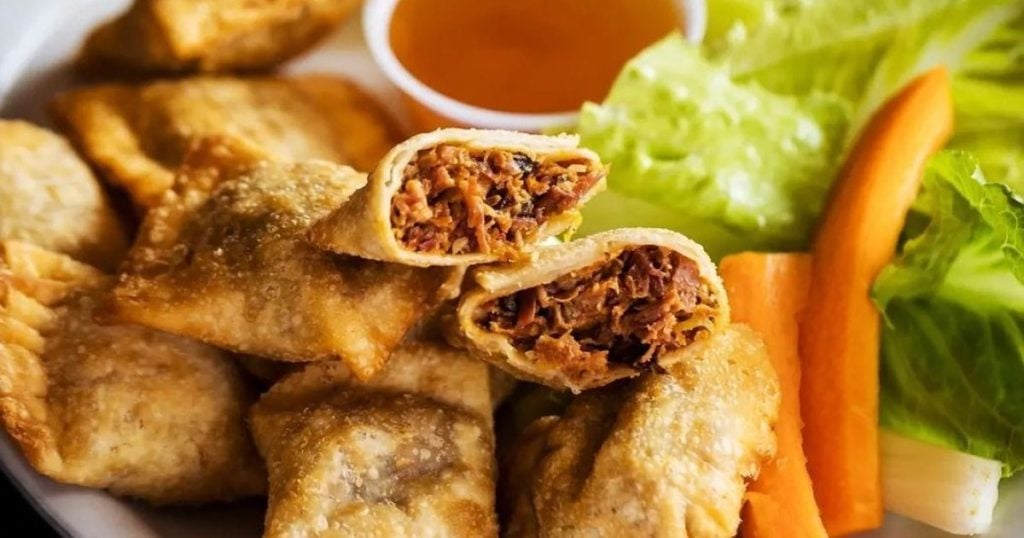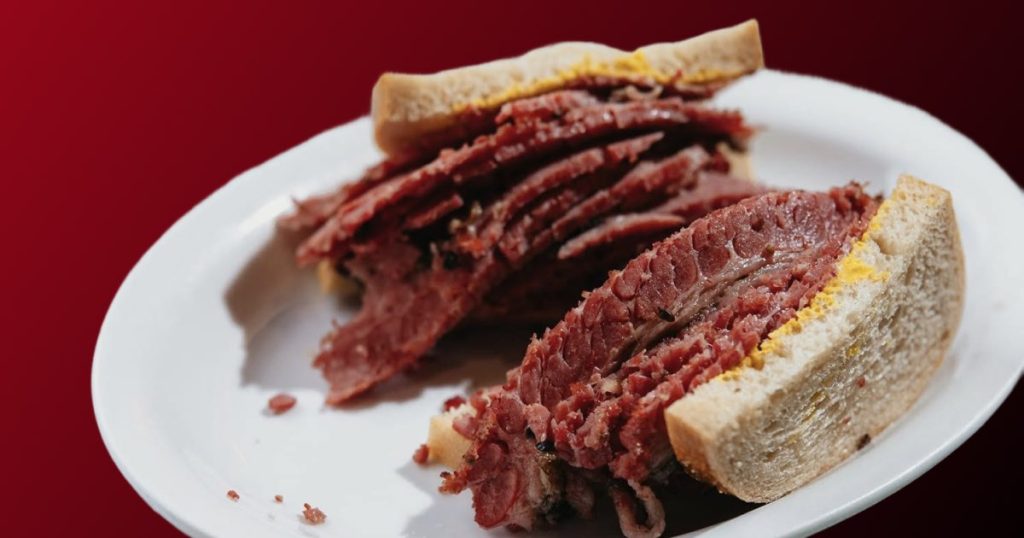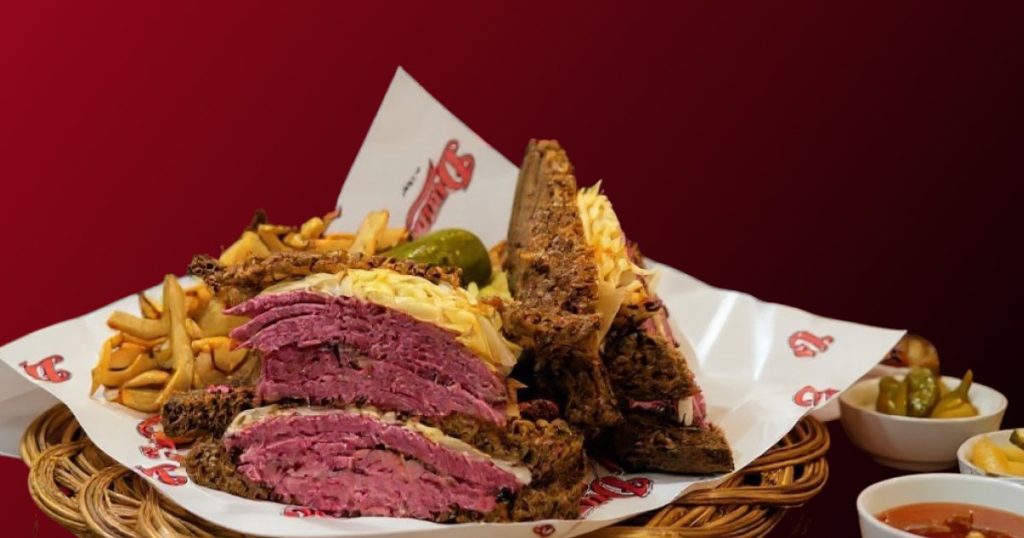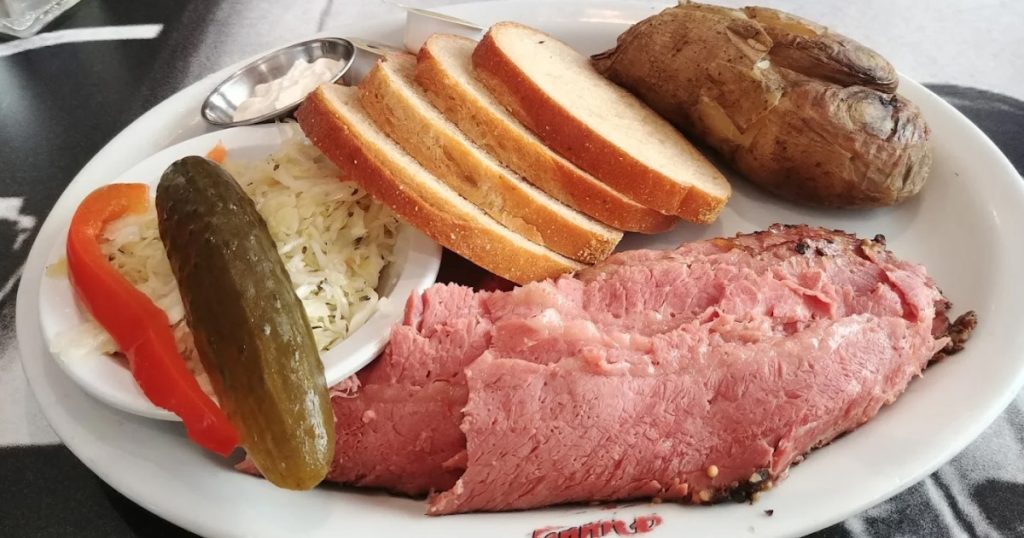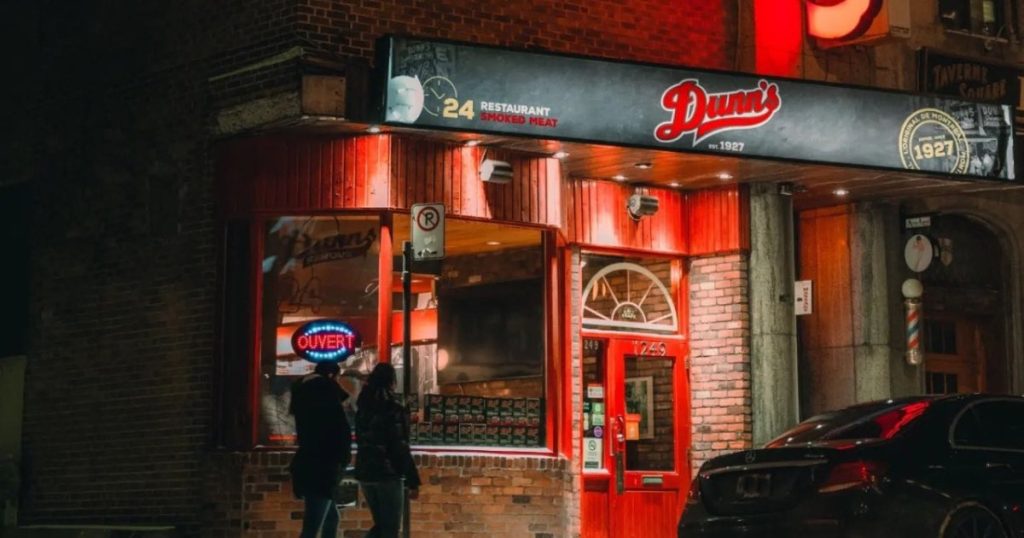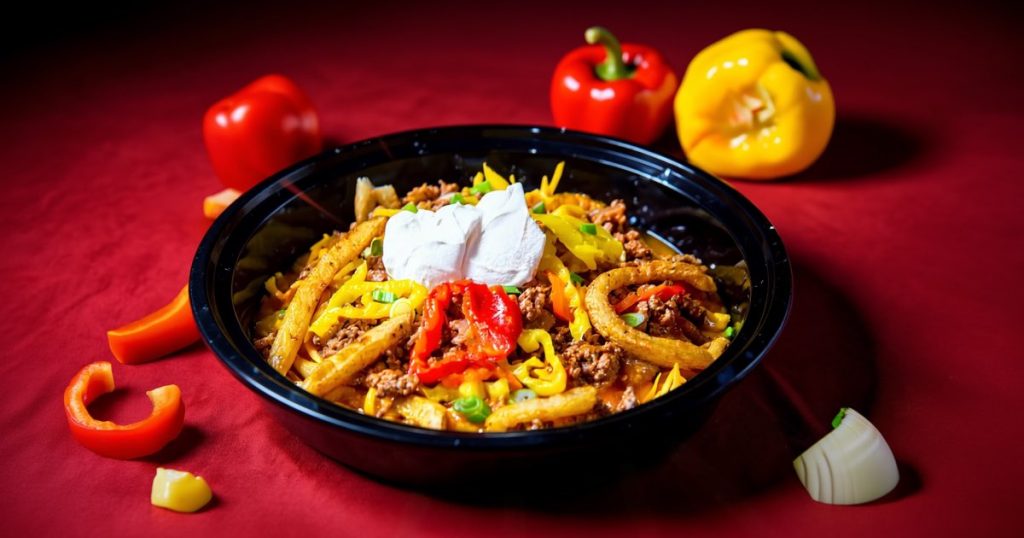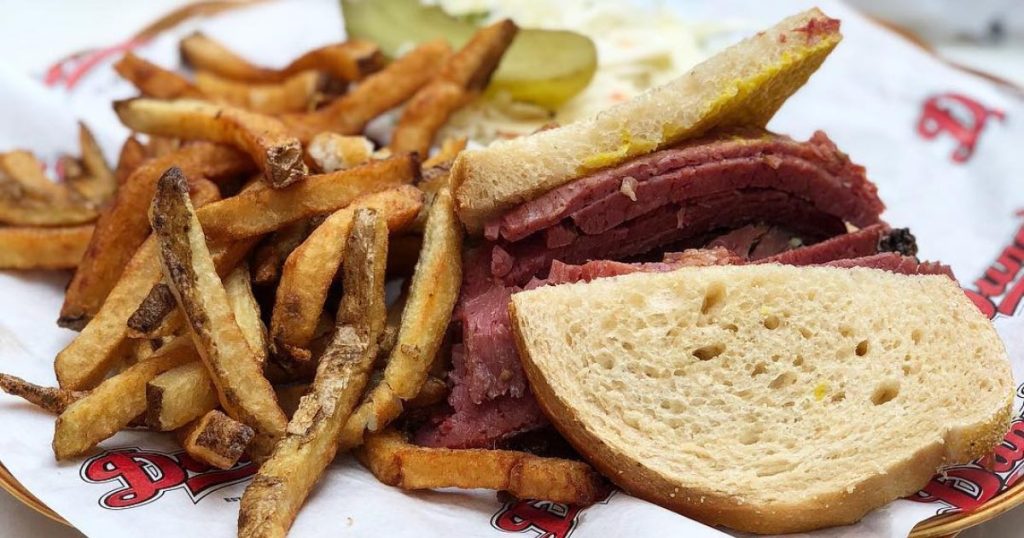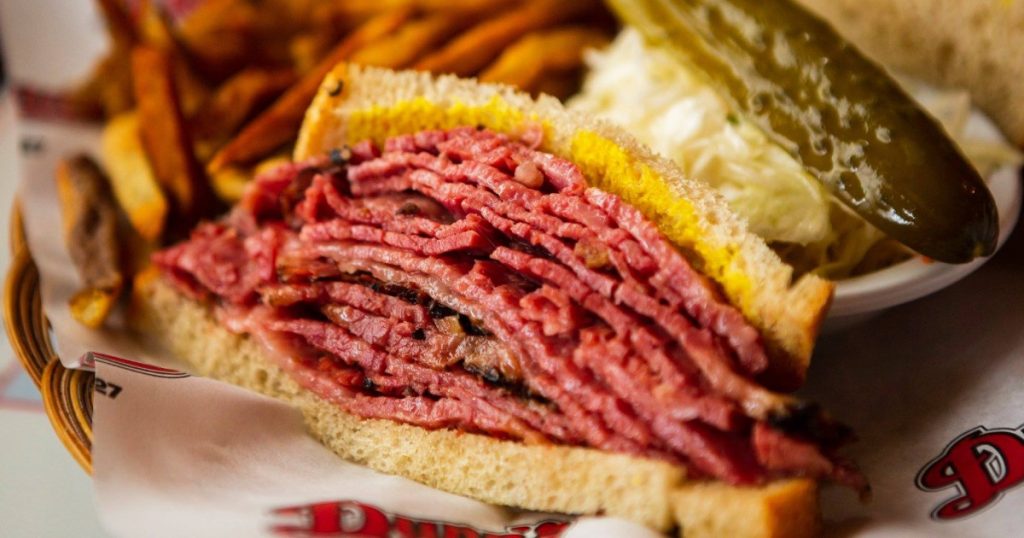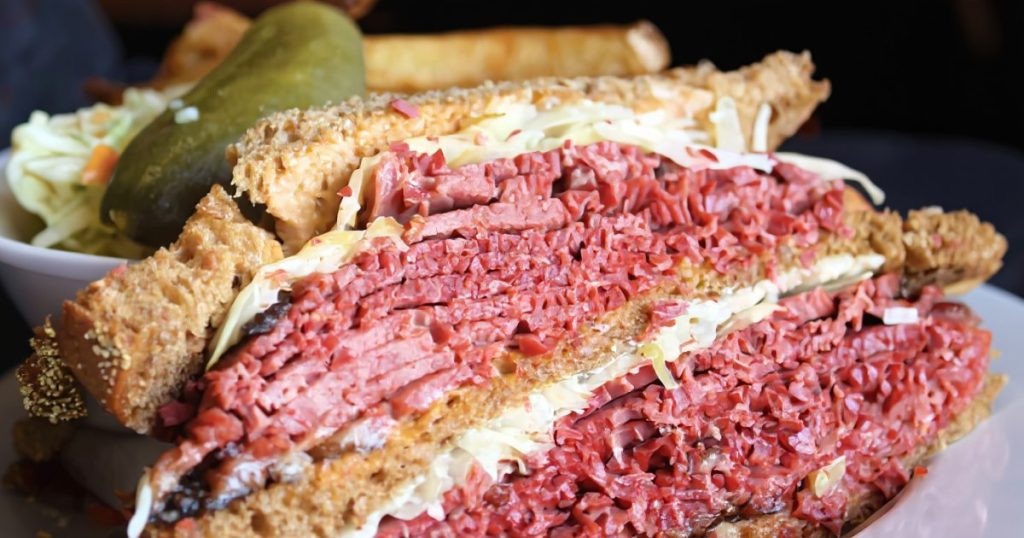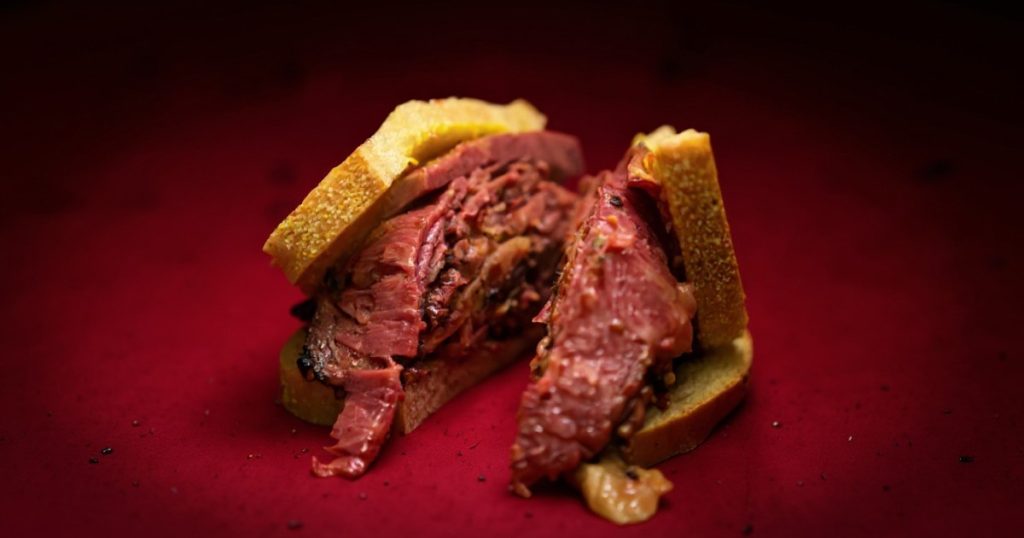Si vous êtes un fan de brisket, vous avez probablement déjà été confronté à ce délicieux dilemme: optez-vous pour la richesse fumée et croûtée du brisket barbecue texan, ou pour la tendreté épicée du fameux smoked meat de Montréal ?
Les deux sont légendaires à leur manière, les deux commencent avec la même coupe, mais elles sont complètement différentes en termes de saveur, de texture et de tradition.
Dans ce blog, nous allons vous guider à travers les principales différences entre la viande fumée de Montréal et le brisket du Texas, de la manière dont ils sont préparés et servis à ce qui rend chaque option spéciale.
Les histoires d’origine
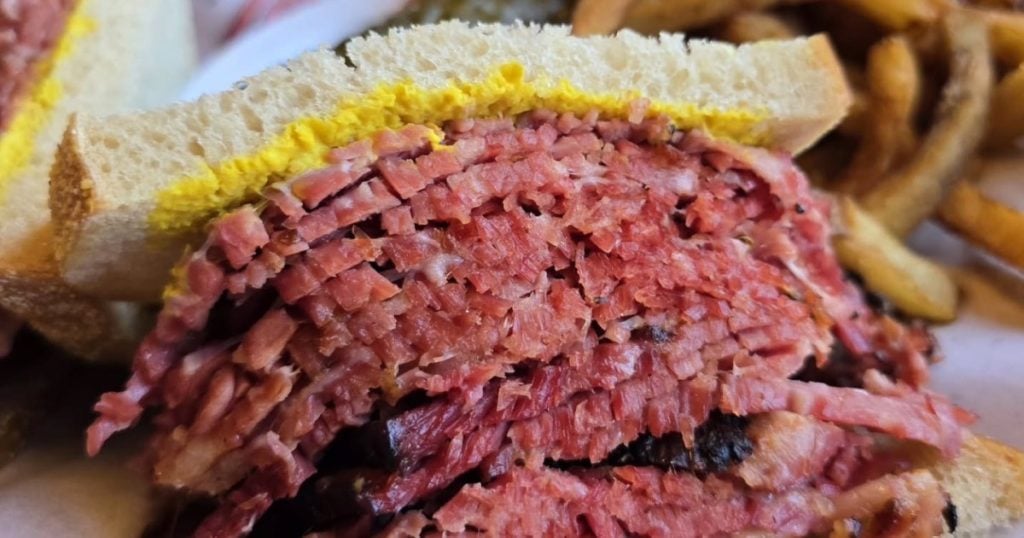
La viande fumée de Montréal trouve ses racines à la fin du XIXe siècle et au début du XXe siècle, lorsque des vagues d’immigrants juifs arrivèrent au Canada, beaucoup venant d’Europe de l’Est. Parmi leurs contributions culinaires figurait la pastramă, une méthode roumaine de conservation et d’épice de la viande avec de l’ail, de la coriandre, du poivre et d’autres assaisonnements audacieux.
Au fil du temps, cette recette évolua à Montréal, où la poitrine de bœuf devint la coupe de choix. Fumée et cuite à la vapeur jusqu’à une tendreté parfaite, elle devint connue sous le nom de viande fumée de Montréal, un aliment de base emblématique des charcuteries juives à travers la ville. Son ascension en popularité a été propulsée par des institutions de quartier qui la servaient empilée sur du pain de seigle avec de la moutarde jaune, consolidant ainsi sa place comme une partie bien-aimée de l’identité culinaire du Québec.
Le brisket du Texas, quant à lui, vient d’une toute autre lignée. Ancré dans le cœur de la culture barbecue du Sud des États-Unis, le brisket texan doit beaucoup de sa tradition aux immigrants allemands et tchèques qui se sont installés au Texas central dans les années 1800.
Ces colons apportèrent avec eux les techniques de fumage de viande du Vieux Monde, utilisées à l’origine pour les saucisses et les morceaux plus durs. Au Texas, ces techniques furent adaptées au brisket, une coupe autrefois considérée comme bon marché et peu désirée. Lentement fumée sur du bois de chêne post pour des heures, cette méthode transforma le brisket en une délicatesse tendre et savoureuse avec un anneau de fumée caractéristique et une croûte. Aujourd’hui, le brisket barbecue texan est un trésor régional, souvent servi à la livre avec des cornichons, des oignons et du pain blanc à côté.
La coupe de viande: De quelle partie s’agit-il?
La viande fumée de Montréal et le brisket du Texas commencent toutes deux avec la même matière première: la poitrine de bœuf entière. Mais la manière dont chaque tradition traite cette coupe en dit long sur leurs approches culinaires respectives.
Dans les charcuteries de Montréal, la poitrine de bœuf est souvent divisée en sections en fonction de la teneur en graisse : maigre, moyen ou gras. La viande est salée avec un mélange d’épices propriétaire, puis fumée et cuite à la vapeur jusqu’à ce qu’elle soit tendre. La découpe est tout aussi délibérée : les bouchers évaluent chaque poitrine pour la découper à partir de la partie plate ou du point, en fonction de la préférence du client pour la graisse. Le résultat est des tranches fines et juteuses qui mettent en valeur la croûte d’épices et l’intérieur marbré, idéales pour préparer ce sandwich ou plateau de viande fumée emblématique..
Au Texas, les pitmasters travaillent généralement avec ce qu’on appelle un “packer cut” de brisket, qui comprend à la fois la partie plate (plus maigre) et le point (plus gras) en une seule pièce. Le brisket est généreusement assaisonné, généralement avec du sel et du poivre grossier, puis lentement fumé pendant 8 à 16 heures sur du bois de chêne post. Après avoir reposé, le brisket est soit tranché dans son entier, soit divisé en sections maigres et moelleuses, selon la préférence du convive. La croûte (la croûte sombre et savoureuse) et l’anneau de fumée rose sont des indicateurs visuels d’un brisket texan parfaitement exécuté.
Bien que la même coupe soit utilisée des deux côtés de la frontière, la manière de la traiter, de la découper et de la présenter diffère de manière à refléter les priorités de saveur et l’héritage culinaire de chaque région.
Méthodes de préparation: Épices vs Fumée
Bien que la viande fumée de Montréal et le brisket du Texas commencent toutes deux avec la poitrine de bœuf, leurs méthodes de préparation divergent rapidement, reflétant des philosophies culinaires très différentes ancrées dans des traditions régionales.
La viande fumée de Montréal met fortement l’accent sur les épices et la technique. Elle commence par un processus de salaison ou de saumure à sec qui peut durer plusieurs jours, permettant à la viande d’absorber à la fois le sel et les saveurs caractéristiques de son mélange d’épices..
Ce mélange d’épices comprend généralement du poivre noir grossièrement moulu, des graines de coriandre écrasées, de l’ail, du paprika et parfois des graines de moutarde ou de l’aneth. Le brisket est ensuite légèrement fumé, juste assez pour ajouter de l’arôme sans écraser le profil épicé, puis cuit à la vapeur jusqu’à ce qu’il soit tendre. Cette dernière étape est cruciale : la cuisson à la vapeur réhydrate la viande après le fumage et lui donne sa texture douce et juteuse emblématique. Le résultat est une viande délicatement épicée, aromatique, d’une teinte rose profonde et d’une saveur équilibrée.
Le brisket barbecue texan, en revanche, est entièrement axé sur la fumée. Les pitmasters commencent par appliquer un rub minimaliste, généralement constitué uniquement de sel kasher et de poivre noir grossier, parfois appelé “Dalmatian rub”. Le brisket est ensuite placé dans un fumoir et cuit lentement pendant 8 à 16 heures, selon la taille et la température du fumoir. Le choix du bois, typiquement du chêne post au Texas central, mais aussi du mesquite ou du pacanier dans d’autres régions, donne un caractère fumé signature. Aucun fumage à la vapeur n’est impliqué. Au lieu de cela, le brisket repose après le fumage pour conserver ses jus, ce qui donne une croûte couverte de croûte, un anneau de fumée rose et une saveur profondément savoureuse et audacieuse.
Essentiellement, la viande fumée de Montréal met l’accent sur la complexité épicée et la tendreté, tandis que le brisket texan privilégie la pureté, la fumée et la patience.
Comment ils sont servis
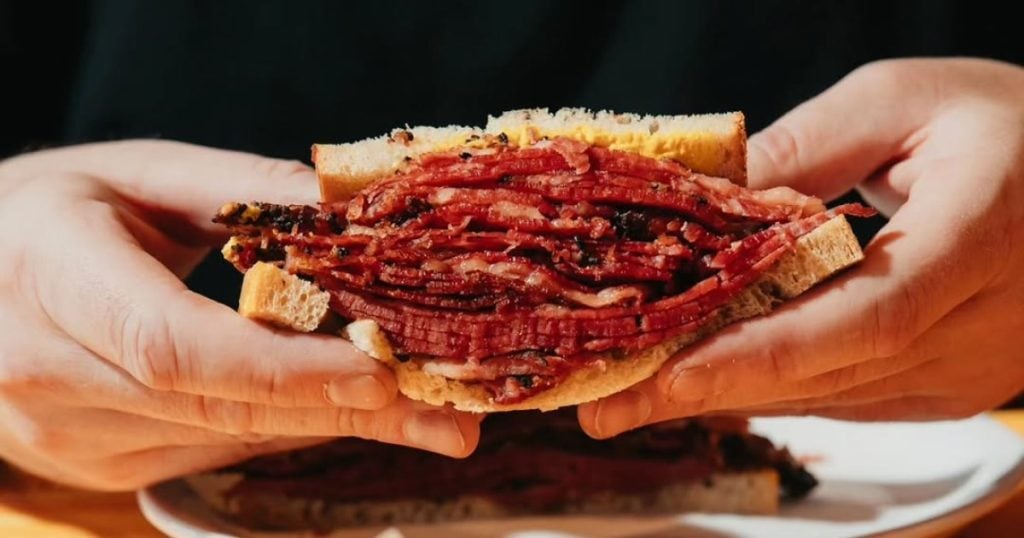
L’une des différences les plus marquantes entre la viande fumée de Montréal et le brisket du Texas réside non seulement dans la préparation, mais aussi dans la présentation.
La viande fumée de Montréal est mieux connue pour sa présentation classique à la charcuterie : de fines tranches de viande tendre empilées sur deux tranches de pain de seigle, généralement accompagnées de rien d’autre que d’une généreuse couche de moutarde jaune. La simplicité met en valeur l’assaisonnement complexe de la viande et sa texture cuite à la vapeur.
Mais la viande fumée de Montréal ne se limite pas aux sandwiches. Dans des endroits comme Dunn’s Famous, vous la trouverez également servie en plats copieux avec des frites, du coleslaw et des cornichons, ou intégrée dans d’autres plats réconfortants comme la poutine à l’italienne (avec sauce à la viande et fromage en grains) ou les pâtes à la viande fumée. La polyvalence de la viande, grâce à son profil épicé, lui permet de compléter une large gamme de garnitures et de formats.
Le brisket texan, en revanche, est généralement servi en tranches épaisses ou hachées et disposé sur du papier de boucher. La viande est souvent accompagnée de classiques d’accompagnement du barbecue du Sud : tranches de pain blanc ou de petits pains, cornichons, oignons, haricots cuits au four, mac and cheese et salade de pommes de terre. L’accent est mis sur un repas décontracté et communautaire.
Verdict final
La viande fumée de Montréal et le brisket du Texas commencent toutes deux par le brisket, mais leurs saveurs et leurs traditions suivent des directions différentes. La version de Montréal est salée, épicée et cuite à la vapeur, tranchée parfaitement pour une bouchée audacieuse et structurée. Le brisket du Texas est tout au sujet du fumage lent, des bords couverts de croûte et de la tendreté fondante.
Envie d’épices et de précision à la charcuterie ? Optez pour Montréal.
Envie de fumée profonde et de texture juteuse ? Le Texas l’emporte.
Au final, les deux sont légendaires. Il ne s’agit pas de savoir lequel est meilleur, mais lequel vous comble aujourd’hui.
Conclusion
Que vous préfériez les couches épicées de la viande fumée de Montréal ou la tendreté fumée du brisket texan, il est indéniable que chaque méthode a son savoir-faire. Elles viennent de traditions différentes, racontent des histoires différentes et satisfont des envies différentes, mais elles célèbrent toutes deux l’amour de la viande de bœuf cuite lentement et pleine de saveur.
Arrêtez-vous chez Dunn’s Famous aujourd’hui et goûtez la meilleure viande fumée de Montréal par vous-même.
